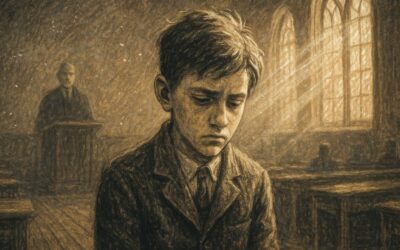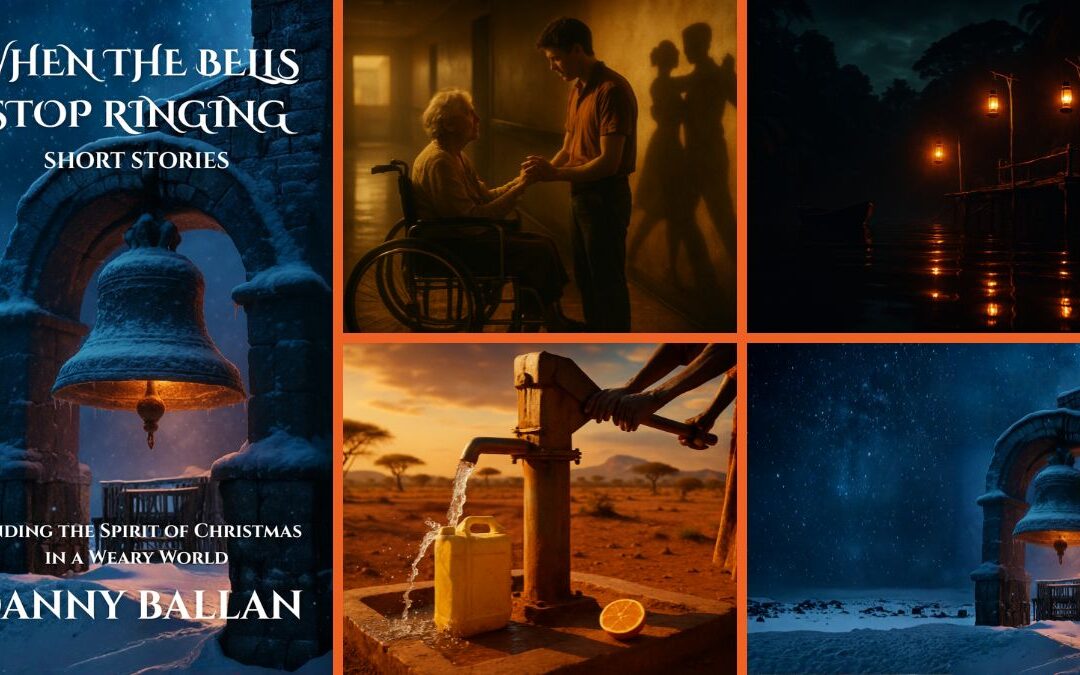Heathcliff by Danny B. Phoenix
“Heathcliff,” written by Danny B. Phoenix, offers a deeply personal and visceral retelling of the story of Heathcliff, one of literature’s most enigmatic and tragic figures, originally introduced in Emily Brontë’s Wuthering Heights. While Brontë’s work explores the turbulent love and destructive passion between Heathcliff and Catherine Earnshaw, Phoenix’s narrative shifts the perspective, delving into Heathcliff’s internal world, shedding new light on his motivations, emotions, and the darker facets of his character.
In this short story, we are invited to experience the psychological torment that consumes Heathcliff. Far from a typical love story, “Heathcliff” is an exploration of a love that is wild and destructive, mirroring the untamed moors that serve as the backdrop of their lives. Through Heathcliff’s voice, we hear the rawness of his pain, his obsession with Catherine, and his descent into madness driven by unfulfilled love and revenge.
The connection between “Heathcliff” and Wuthering Heights lies in the deep dive into the emotional complexity of Heathcliff’s character. Phoenix’s retelling honors Brontë’s themes of love, revenge, and obsession but goes beyond by providing a more intimate and confessional portrayal of Heathcliff’s psyche. While Wuthering Heights presents Heathcliff as both villain and victim, “Heathcliff” paints a fuller picture of a man who is consumed by the fierce, destructive forces of his emotions.
This story serves as a reminder that love is not always a force for good. It can be, as Heathcliff describes, a storm that leaves devastation in its wake. For readers of Wuthering Heights, “Heathcliff” offers a fresh and darker perspective on one of literature’s most enduring tales of love, obsession, and tragedy.
Heathcliff and Wuthering Heights
“Heathcliff” offers a fresh and deeply introspective perspective on Wuthering Heights by allowing readers to step fully into the mind of Heathcliff, a character often perceived as both villain and tragic figure. While Wuthering Heights primarily presents Heathcliff through the lenses of other characters and the third-person narrative, Danny B. Phoenix’s retelling strips away the external judgments and reveals Heathcliff’s raw, unfiltered emotions, motivations, and inner conflicts.
In Wuthering Heights, Heathcliff is portrayed as an almost impenetrable force of vengeance, driven by his turbulent love for Catherine and his desire for revenge on those who wronged him. Phoenix’s story, however, digs deeper into the psychological complexities that drive him. By using a first-person narrative, “Heathcliff” transforms Heathcliff from a shadowy, inscrutable figure into a deeply human character consumed by his own destructive passions. Readers are not just observing Heathcliff’s actions—they are living his torment, his longing, and his unrelenting obsession with Catherine.
What makes this perspective fresh is its focus on Heathcliff’s internal world rather than the external events of the novel. Wuthering Heights is famously gothic, with its themes of love, revenge, and death interwoven with the eerie moors. Phoenix’s story, however, draws attention to the psychological and emotional horror of a man who cannot escape his love, even in death. It emphasizes that Heathcliff’s villainy is not born solely of cruelty, but from a deep-seated sense of abandonment, loss, and the impossible desire to possess something that cannot be reclaimed.
Moreover, Heathcliff challenges readers to rethink the nature of love itself. Whereas Wuthering Heights can sometimes feel like a tragic, gothic romance, Phoenix redefines Heathcliff’s love for Catherine as something darker—an obsession that is more about possession and control than mutual affection. This portrayal forces readers to confront uncomfortable truths about love and passion, especially when they consume an individual to the point of self-destruction. The intimacy of Heathcliff’s voice in this retelling brings these themes to the forefront, making it impossible for readers to ignore the psychological toll that his all-consuming love for Catherine exacts on him.
In doing so, Phoenix reshapes Heathcliff into a character who is not just acting out of anger or malice but out of an obsessive need to fill the emptiness left by Catherine’s absence. This makes “Heathcliff” a story not just of revenge, but of the dangers of an untamed, obsessive love—one that consumes both Heathcliff and the world around him.
By presenting Heathcliff’s journey through his own eyes, Phoenix allows readers to question the traditional narratives surrounding love, villainy, and redemption. It offers a fresh and deeply human perspective on a character who, in Wuthering Heights, is often seen as more of a symbol than a fully realized person. Phoenix’s retelling forces readers to confront the uncomfortable reality that love, especially when intertwined with obsession and power, can be just as destructive as it is beautiful.
Heathcliff Album
The album accompanying Heathcliff adds a rich, emotional layer to the narrative, weaving music and story into a cohesive and immersive experience. Each song serves as a reflection of the key moments and themes in the story, deepening the listener’s connection to Heathcliff’s turbulent journey.
With songs like “Winds of the Moors,” which captures the wild, untamed essence of the moors and mirrors Heathcliff and Catherine’s fierce relationship, listeners are transported into the atmospheric world of Wuthering Heights. The haunting melody, paired with lyrics that evoke the stormy, emotional landscape, immerses the audience in the love and despair that define Heathcliff’s existence.
“Ghosts in the Hallways” offers a melancholic yet catchy tune, focusing on the theme of being haunted by memories, both literal and metaphorical. This song encapsulates the feeling of walking through the shadow of lost love, much like Heathcliff does after Catherine’s death, and serves as a haunting reminder of how the past lingers within the walls of Wuthering Heights.
The powerful “Love’s Bitter Edge” explores the duality of love and pain. With its emotional chorus, this song highlights the destructive nature of Heathcliff and Catherine’s bond, reminding listeners that their love is not a source of comfort but of torment.
“Shadow and Flame” delves into Heathcliff’s internal struggle as his love for Catherine transforms into something darker and obsessive. The intensity of the song’s progression mirrors Heathcliff’s emotional descent, reflecting his inability to escape the shadows of his own heart.
Each track on the album serves as a musical extension of the story, drawing the listener deeper into the emotional core of Heathcliff. Together, the songs and the story offer a fresh way to experience the timeless tale of Wuthering Heights from Heathcliff’s perspective. The music amplifies the themes of love, obsession, and revenge, providing a dynamic soundtrack that enhances the tragic beauty of the narrative.










0 Comments